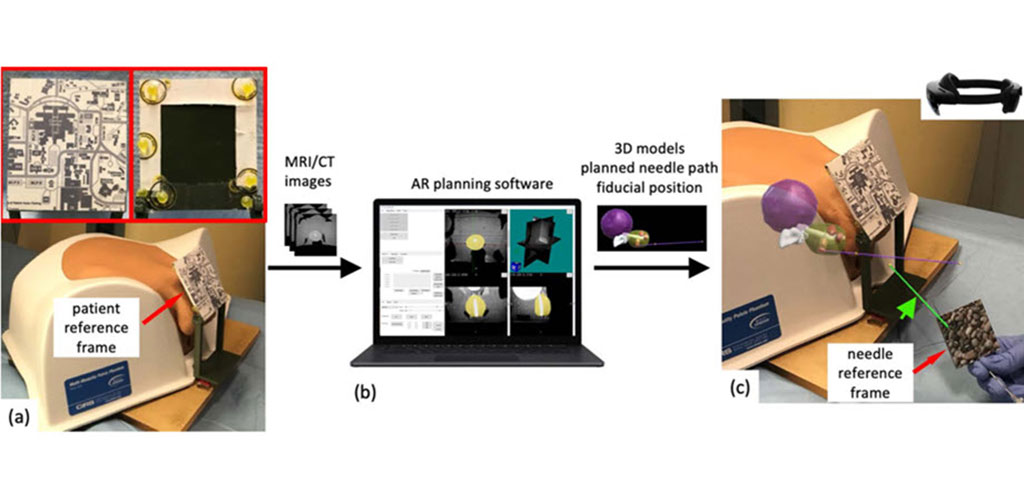AR System Enables Free-Hand, Real-Time Needle Guidance for Prostate Cancer Diagnosis
Posted on 06 Mar 2023
Prostate cancer is the second most common cause of cancer-related deaths among men, according to the US Centers for Disease Control and Prevention. Transperineal (TP) biopsy is one of the conventional methods used for diagnosing and treating prostate cancer by collecting tissue samples through a needle inserted through the perineum wall. TP biopsy typically involves a pre-operation MRI scan and a transrectal ultrasound, with the images combined and displayed on a monitor for the urologist to visualize. The urologist can perform the needle insertion process free-hand or through a grid-based method. However, 2D visualization of a 3D region can make the needle's guidance and visualization a challenging task.
To address this issue, researchers from the US National Institutes of Health (NIH, Bethesda, MD, USA) have proposed an approach based on an augmented reality (AR) system called HoloLens. In their recent paper published in the Journal of Medical Imaging, the researchers have detailed their successful HoloLens AR system that accurately and effectively projects MRI and ultrasound images onto patients, helping to guide a needle to the target. The HoloLens AR system employs a volumetric 3D scan, like an MRI scan, to create an accurate view of the patient. Leveraging reference data from the patient, the MRI scan can be superimposed precisely onto the patient. The superimposed image is fed into the HoloLens goggles worn by the urologist and enables viewing the patient as well as the MRI of the patient in proper alignment. The HoloLens goggles also enable the urologist to view the image at different angles by moving the head. HoloLens can also display the pre-planned needle path on the patient, the target tissue of the prostate, and the real-time needle position during the procedure.

To evaluate their AR system's image overlay accuracy and needle targeting precision, the researchers utilized a 3D-printed phantom. They used the free-hand as well as planned-path guidance methods to guide needles into a gel phantom, and subsequently recorded the needle placement errors. The system was also used to deliver soft tissue markers onto tumors of a human pelvis phantom. The researchers found similar placement errors associated with both free-hand and planned-path guidance methods. Moreover, all implanted soft tissue markers were inside or in close proximity to the tumors.
“The current methods have certain limitations to them,” said Dr. Ming Li from the NIH who led the research. “Robot-assisted guidance is costly and adds procedural time, while other methods require a certain path for the needle that leaves out the outer reaches of the prostate. These problems are solved using the HoloLens AR system, which provides the doctor with the ability to use a free-hand approach.”
“The HoloLens has the potential to provide more flexibility than the current grid-based TP methods and can do so accurately,” highlighted Li. “By providing a 3D immersive experience, the HoloLens AR system makes free-hand lesion targeting feasible. As needle procedures move from rectum to the perineum, AR systems could provide great clinical value to doctors and patients by solving the problems associated with prostate intervention procedures.”
Related Links:
NIH














